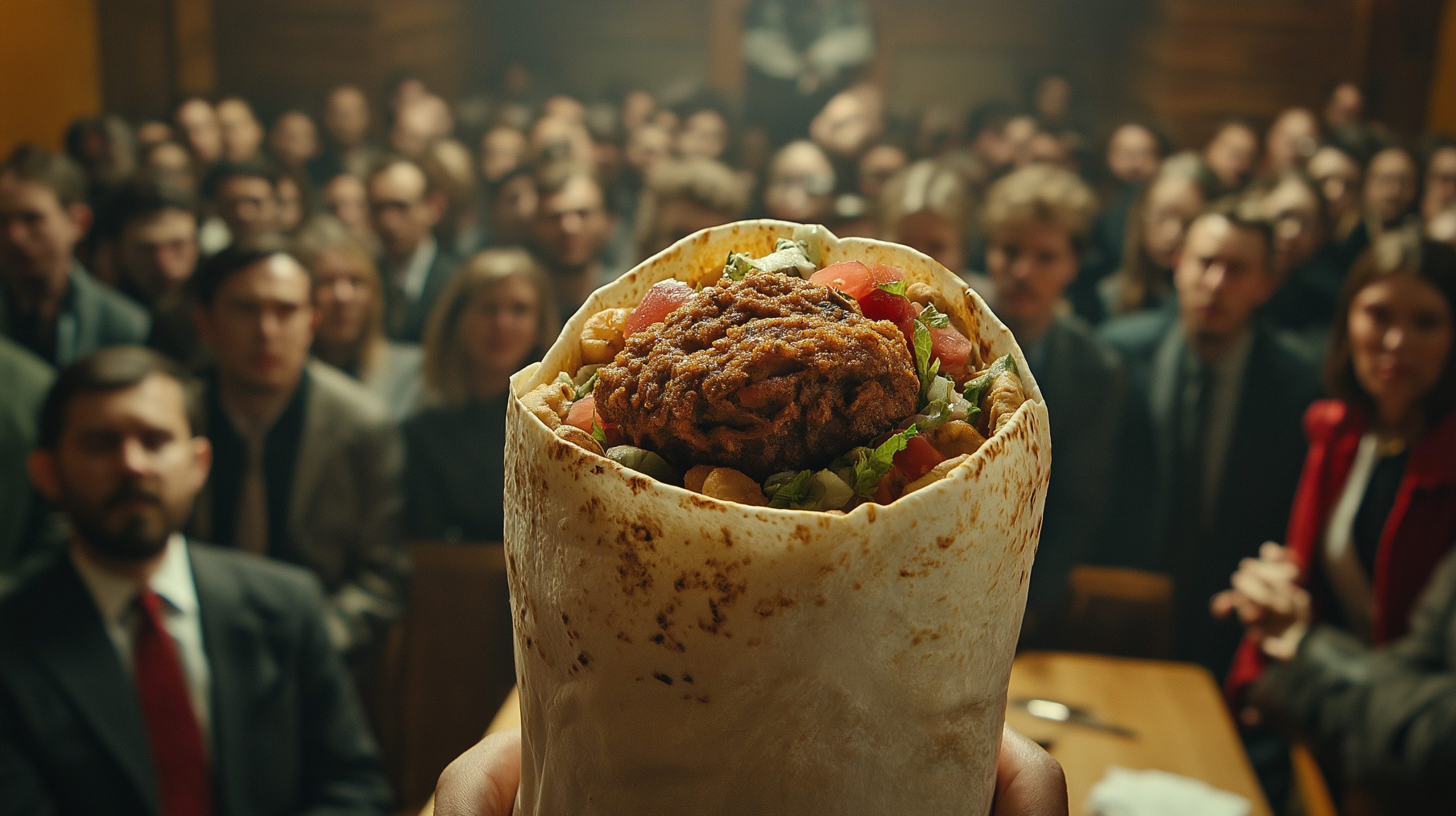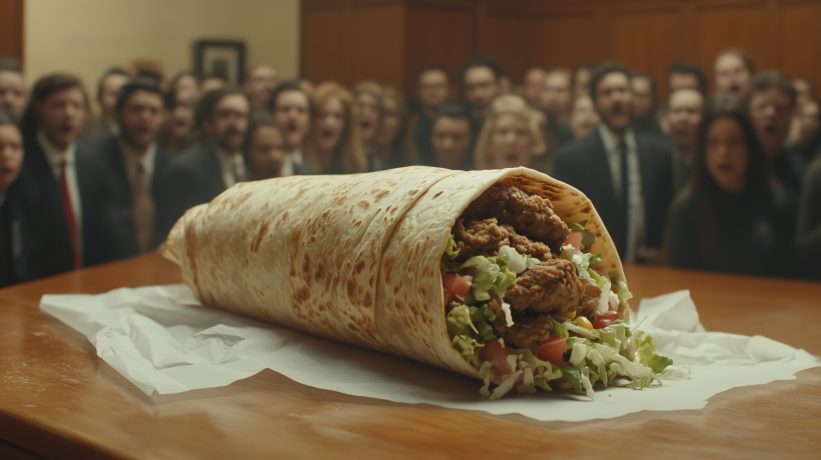
Chipotle's inconsistent portion sizes have triggered a securities fraud lawsuit as shareholders claim executives misled investors about the company's value proposition and competitive position. The controversy has led to significant stock price drops, with shares falling nearly 8% after the company admitted to portion control issues and increased costs to ensure "generous portions."
by LawInc Staff
November 13, 2024
Chipotle investors got a taste of disappointment as the fast-casual chain’s portion problems led to a securities class action lawsuit. The complaint alleges Chipotle and its executives misled shareholders about its portion control issues, ability to compete, and value proposition. As the extra helping of truth came out, Chipotle’s stock price tumbled.
This guide breaks down everything you need to know about the Chipotle lawsuit, from the key claims and legal concepts to the status and stakes of the case. Learn how inconsistent scoop sizes might amount to securities fraud and what it takes to prevail in a shareholder suit.
1. Understand the Basis of the Claims
-
- Violations Alleged: The lawsuit claims Chipotle violated Sections 10(b) and 20(a) of the Securities Exchange Act and SEC Rule 10b-5.
- False Statements: The complaint alleges Chipotle made materially false and misleading statements about its portion sizes, ability to compete, and value.
- Scienter (Fraudulent Intent): Plaintiffs assert Chipotle executives knowingly or recklessly made the false statements.
- Economic Loss: As the truth about portion problems came out, Chipotle’s stock price dropped, damaging shareholders.
- Loss Causation: The lawsuit links the stock drops to Chipotle’s revelations about portion issues and rising costs to correct them.
Legal Lingo:
-
- Securities Fraud: Deceiving investors about a company to manipulate its stock price.
- Rule 10b-5: Prohibits making untrue statements or omitting material facts in connection with security transactions.
- Scienter: Intent to deceive or reckless disregard for the truth, a critical element of securities fraud.
- Material: A fact that would likely influence a reasonable investor’s decision to buy, sell or hold a stock.
- Class Action: A single lawsuit that represents many similarly harmed parties, such as defrauded shareholders.
Digest the Details:
-
- The core claim is that Chipotle deceived investors about its inconsistent portions, the impact on its business, and corrective costs.
- Statements downplaying portion problems and affirming Chipotle’s value and competitiveness are alleged to be materially false.
- Proving executives knowingly lied or recklessly ignored portion issues is key to establishing fraudulent intent.
- Chipotle’s stock drops as it acknowledged portion inconsistencies and rising costs are presented as evidence of investor losses caused by the alleged fraud. However, further analysis is needed to definitively establish that the drops were directly caused by the alleged fraud, and not other market factors.
- The class covers Chipotle shareholders who bought stock between February 8th and October 29th, 2024, before the full truth came out.
FAQs:
-
- Is this a legitimate legal claim against Chipotle? If evidence substantiates the allegations of false statements that misled investors and caused losses, it could be a viable securities fraud case.
- Does Chipotle have any defenses? It may argue its statements were true when made, it lacked intent to deceive, or factors other than portion revelations caused stock drops.
- What’s the burden of proof for securities fraud? Plaintiffs must show it’s more likely than not the elements of a 10b-5 claim are met, based on a preponderance of evidence.
- How much are the potential damages? Shareholder losses would be measured by the stock price decline attributable to Chipotle’s alleged fraud.
- What happens next in the lawsuit? The court will rule on a likely motion to dismiss, then the case moves into discovery if it proceeds, but may settle at any time.
2. Trace the Timeline of Events
-
- February 8, 2024: Chipotle’s 2023 Annual Report touts its value proposition and ability to compete, stay relevant and handle rising costs.
- Spring-Summer 2024: Social media explodes with complaints of shrinking and inconsistent Chipotle portions.
- May 2024: Chipotle execs deny portion reductions and downplay the impact of portion problems in media interviews.
- July 2024: Chipotle’s Q2 call admits to portion inconsistency and reveals plans for larger, pricier portions, causing stock drop.
- October 2024: Q3 report shows Chipotle’s rising costs to ensure “generous portions” cut into profits, sending stock down nearly 8%.
Why It Matters:
-
- The lawsuit focuses on Chipotle’s statements about portion sizes/value in February-May 2024 before it admitted inconsistencies in July.
- Slowing sales and falling stock prices as portion problems emerged may help show materiality and loss causation.
- Chipotle’s July and October acknowledgment of portion issues and higher costs supports claim it misled before then.
- Timing executives’ statements against internal portion data they had access to could help prove scienter.
- Drops in Chipotle’s stock price in July and especially October as truth emerged are key to shareholder damages.
Connect the Dots:
-
- Review the timeline against Chipotle’s public filings and executive statements to spot potential inconsistencies and misrepresentations.
- Check if Chipotle’s SEC filings disclosed risks related to portion controls, costs, and competition during the class period.
- Compare executives’ statements downplaying portion concerns to customer complaints and internal company discussions at the time.
- Note Chipotle’s shifting messaging from denying reduced portions to acknowledging inconsistencies to investing in portion sizes.
- Correlate Chipotle’s stock drops with its portion-related revelations to assess loss causation and damages.
FAQs:
-
- How long is the class period in the lawsuit? The proposed class covers investors who purchased Chipotle stock from February 8 to October 29, 2024.
- What’s the significance of the October 2024 stock drop? It appears to be largest alleged corrective disclosure, with shares falling nearly 8% as Chipotle quantified the impact of portion size problems.
- Why does executives’ knowledge matter? Proving they knew their statements were false or recklessly disregarded the truth is required for scienter, not just negligence.
- What internal documents will be key evidence? Portion size records, customer complaint data, executive emails and internal financial projections could all be relevant.
- How do Chipotle’s SEC filings fit in? Its quarterly and annual reports to investors must be truthful and complete, so any misleading statements or omissions in them can support the fraud claims.
3. Analyze the Strengths & Weaknesses
-
- Strong Suit: If evidence shows Chipotle knew of material portion problems while telling investors all was well, that’s powerful for scienter.
- Smoking Gun: Clear proof executives lied about portion sizes, like emails showing they knew statements were false, would be a bombshell.
- Hurdle to Overcome: Chipotle may claim portion issues weren’t material to investors or known to execs when they made affirming statements.
- Loss Challenge: Proving amount of shareholder losses directly caused by fraud, not other market forces, can be complex.
- Pressure Point: Threat of discovery into Chipotle’s internal records and potential damages may drive settlement talks.
Cautionary Comparisons:
-
- Tesco Accounting Scandal (2014): British grocery giant Tesco overstated its profits by £250 million due to improper accounting practices related to supplier rebates and delayed accrual of costs. The company faced a steep drop in share price, a £129 million fine from the Serious Fraud Office, and a shareholder lawsuit resulting in a £85 million settlement.
- American Realty Capital Properties (ARCP) Accounting Fraud (2014): ARCP admitted to overstating its funds from operations and understating its net loss, resulting in a restatement of financials. The SEC charged the REIT and executives with fraud, resulting in nearly $150 million in settlements. The company (renamed VEREIT) also settled a shareholder class action for $85 million.
- Wells Fargo Fake Accounts Scandal (2016): Wells Fargo employees opened millions of unauthorized customer accounts to meet aggressive sales targets. The bank faced congressional hearings, SEC and DOJ investigations, over $185 million in regulatory fines, a $142 million class action settlement, and significant reputational damage.
- Luckin Coffee Fabricated Sales (2020): Chinese coffee chain Luckin Coffee inflated its sales by over $300 million, resulting in an SEC investigation, delisting from NASDAQ, a $180 million fine, and default on $460 million in convertible bonds. The company faced class action lawsuits from shareholders and settled one case for $175 million.
Weigh the Evidence:
-
- Consider if Chipotle’s statements about portions and value were specific enough to be actionable as false or just vague puffery.
- Look for inconsistencies between internal portion data/discussions and executives’ public statements to investors.
- Evaluate if a reasonable investor would consider portion changes and resulting costs material to Chipotle’s bottom line and stock price.
- Assess the methodology and assumptions behind any expert analysis of damages and loss causation for potential flaws.
- Watch for a Wells Notice from the SEC signaling a parallel investigation that could bring added pressure on Chipotle.
FAQs:
-
- What’s the biggest challenge for plaintiffs in this case? Establishing executives’ fraudulent intent and tying stock losses to their misstatements will be key, which can be difficult from outside the company.
- Does this mean Chipotle portions really shrank? Legally, plaintiffs need to show Chipotle misled investors about portion issues, not definitively prove sizes changed, though that could be relevant evidence.
- Will Chipotle executives face jail time? Unlikely, as this is a civil shareholder lawsuit seeking monetary damages, not a criminal case, though if evidence warrants the SEC or DOJ could separately investigate.
- What are the odds this case settles vs. goes to trial? Most securities class actions settle before trial, but it depends how strong each side believes their case is and how much pressure Chipotle feels to resolve it.
- Who is the lead plaintiff and why does that matter? The court appoints a lead plaintiff, usually the shareholder applicant with the largest financial interest, to represent the class and make key decisions with counsel.
4. Consider the Stakes & Implications
-
- Financial Fallout: With 31 million shares outstanding, any fraud penalty per share could translate to massive damages.
- Brand Blowback: Chipotle built its brand on “Food With Integrity,” so portion games and lawsuits alleging dishonesty could tarnish that halo.
- Customer Confidence: Will lingering doubts about what customers get for their money bother burrito buyers long-term?
- Cautionary Tale: Chipotle’s portion saga is a warning to companies to stay alert to social media gripes before they boil over to investors and courts.
- Reform Pressures: A loss or costly settlement could prompt more transparent portion standards and controls to prevent a repeat.
- SEC Scrutiny: If the SEC launches a formal investigation and finds evidence of securities law violations, Chipotle could face significant fines, penalties, and reputational damage. An SEC probe could also result in charges against individual executives and prompt changes to the company’s leadership, governance, and disclosure practices.
The Big Picture:
-
- Chipotle shares are down over 20% since portion problems surfaced, with some analysts lowering price targets and ratings.
- With over 3,000 locations and $8 billion in revenue, any reputational damage or legal liability could make a supersized impact.
- Inconsistent portions threaten Chipotle’s value proposition of abundant, quality ingredients worth a premium price.
- The lawsuit shines a spotlight on the legal risks of rosy corporate statements disconnected from operational realities.
- How Chipotle responds, in and out of court, will shape shareholder and stakeholder confidence in management going forward.
Looking Ahead:
-
- Watch for the court’s class certification decision, which enables the case to proceed on behalf of all similarly situated shareholders.
- Stay alert to Chipotle’s messaging around quality, quantity, and value and see if it shifts in the wake of the lawsuit.
- Look out for new SEC rules or congressional hearings examining corporate transparency and accountability to investors.
- See if Chipotle competitors seize the chance to spotlight their own portion standards to nervous burrito buyers.
- Keep an eye on any changes in Chipotle’s leadership, processes or culture to address the portion problems at the root of this legal battle.
FAQs:
-
- What’s the worst-case scenario for Chipotle? A jury finding clear evidence of fraud and imposing hefty damages, plus possible SEC fines or leadership shakeup, could take a serious toll.
- Will Chipotle have to admit wrongdoing? Not necessarily, as settlements often include no admission of liability, but some courts push for more accountability.
- Could this sink Chipotle as a company? That’s unlikely given Chipotle’s size, but the financial, legal and reputational hits could certainly slow growth and impact profitability.
- Will this make Chipotle’s burritos bigger? Time will tell, but pressure from the lawsuit and wary customers may force Chipotle to adopt more standardized portions.
- What’s next in the litigation process? Chipotle will likely file a motion to dismiss the complaint, while plaintiffs seek internal records in discovery to build their case.
Conclusion

Portion Control Problems: Chipotle’s inconsistent scoop sizes leave shareholders hungry for answers – and potential restitution.
Chipotle’s super-sized portion scandal has left a bitter taste with shareholders now seeking to hold the fast-casual giant accountable in court. The class action complaint alleges Chipotle and its executives misled investors about the scope and impact of its scoop size shenanigans.
As the lawsuit winds its way through the legal system, the future of Chipotle’s “food with integrity” reputation hangs in the balance. The outcome could have a sizable impact on Chipotle’s finances, brand trust, customer loyalty, and corporate practices. For would-be plaintiffs and spectators alike, how this spicy courtroom showdown unfolds will offer valuable lessons about transparency, accountability and aligning what companies say with what they serve.
Test Your Shareholder Suit Savvy
Questions: Securities Fraud Fundamentals
-
- 1. Under which federal law is the primary securities fraud claim brought against Chipotle?
- A) Securities Act of 1933
- B) Securities Exchange Act of 1934
- C) Sarbanes-Oxley Act of 2002
- D) Dodd-Frank Act of 2010
- 2. Which of the following is NOT an element plaintiffs must prove in a 10b-5 securities fraud claim?
- A) A material misrepresentation or omission
- B) Scienter (fraudulent intent)
- C) Personal gain by the defendants
- D) Loss causation
- 3. To establish scienter, plaintiffs must show defendants acted with at least:
- A) Negligence
- B) Gross negligence
- C) Recklessness
- D) Actual knowledge
- 4. For a statement to be material, it must be important to a:
- A) Reasonable investor
- B) Day trader
- C) Financial analyst
- D) Activist shareholder
- 5. Plaintiffs in a securities class action typically must show their losses were caused by:
- A) Poor management decisions
- B) Negative media coverage
- C) Unrelated market factors
- D) Revelation of the alleged fraud
- 1. Under which federal law is the primary securities fraud claim brought against Chipotle?
Answers: Securities Fraud Fundamentals
-
- 1. B) The Securities Exchange Act of 1934, Section 10(b) and Rule 10b-5 are the key provisions for securities fraud class actions.
- 2. C) Personal gain by defendants is not a required element, though it can help show motive. The other choices are essential parts of a 10b-5 claim.
- 3. C) Plaintiffs must show defendants acted at least recklessly, not just negligently, regarding the truth of their statements.
- 4. A) Materiality is judged by the “reasonable investor” standard – what would likely matter in their decisions to buy, sell or hold the stock.
- 5. D) Loss causation means plaintiff’s economic loss was a foreseeable result of the defendant’s alleged fraud being revealed, not other forces.
Questions: Chipotle Case Specifics
-
- 1. The lawsuit alleges Chipotle downplayed or misrepresented which key issue?
- A) Food safety risks
- B) Inconsistent portion sizes
- C) Executive compensation
- D) Supply chain disruptions
- 2. According to the complaint, how did Chipotle first acknowledge the impact of portion concerns?
- A) In an SEC filing
- B) On an earnings call
- C) Through a press release
- D) On social media
- 3. The class period in this lawsuit runs from February to:
- A) July 2024
- B) August 2024
- C) September 2024
- D) October 2024
- 4. Chipotle’s largest stock drop related to portion problems was nearly:
- A) 2%
- B) 4%
- C) 6%
- D) 8%
- 5. Which top Chipotle executive is NOT named as an individual defendant?
- A) Brian Niccol (CEO)
- B) John Hartung (CFO)
- C) Scott Boatwright (Chief Restaurant Officer)
- D) Roger Theodoredis (Chief Legal Officer)
- 1. The lawsuit alleges Chipotle downplayed or misrepresented which key issue?
Answers: Chipotle Case Specifics
-
- 1. B) Inconsistent portion sizes are at the heart of the securities fraud allegations against Chipotle.
- 2. B) Chipotle executives first acknowledged a material impact of portion issues on a July 2024 earnings call.
- 3. D) The proposed shareholder class period runs from February 8, 2024 to October 29, 2024.
- 4. D) Chipotle’s steepest stock drop, nearly 8%, came in October 2024 after its Q3 report quantified the effects of ensuring more generous portions.
- 5. D) CEO Brian Niccol and CFO John Hartung are named defendants, but Chief Legal Officer Roger Theodoredis is not.
Key Takeaways
The Chipotle class action complaint alleges executives made materially false and misleading statements about the company’s portion sizes, ability to compete and value proposition. As the truth about portion problems emerged, Chipotle’s stock price fell, damaging shareholders.
To prevail, plaintiffs must show Chipotle acted at least recklessly in making the alleged misstatements, which caused foreseeable economic losses to investors. How the court views the relationship between Chipotle’s public reassurances and private portion concerns will be pivotal.
At stake are potentially sizable damages, reputational hits, and changes to Chipotle’s portion practices and disclosures. The lawsuit offers lessons for businesses on the legal risks of public statements that may not match operational realities.
The case is still in its early stages, with class certification, fact discovery, and fights over evidence on the horizon. While many securities suits settle before trial, Chipotle’s appetite for defending its “food with integrity” image could affect its strategy.
However the shareholder battle unfolds, Chipotle’s portion saga is a cautionary tale about the hidden costs of promising big but coming up short. When scoop sizes and corporate credibility both shrink, legal bills have a way of supersizing fast.
Also See
Fake Meat, Real Money: Claim Your Share of $7.5M Beyond Meat Settlement!
Subway Served with Class Action Over Alleged Skimpy Sandwiches
Chubby Snacks Sued Over “Low-Sugar” Claims – What You Need to Know










